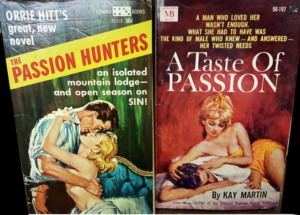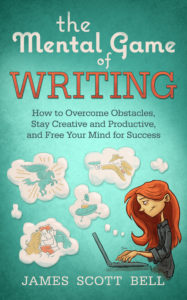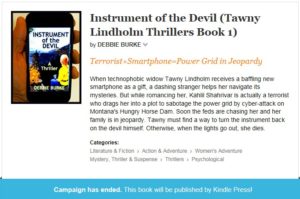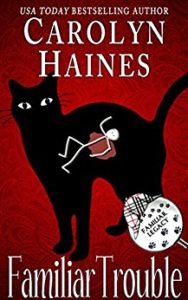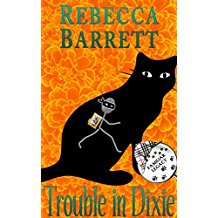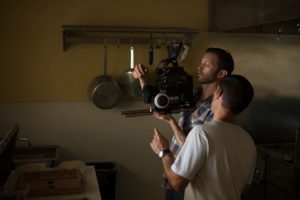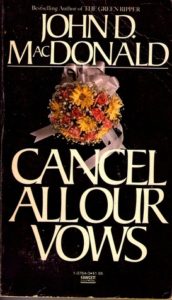by Larry Brooks
A few of you know that I used to play professional baseball. During my very first spring training, all the pitchers were subjected to sprints and conditioning drills in the humid Florida heat, to the extent many of us were losing our breakfast on the third base line. Every day, as many of us were near collapse, hands on knees, visibly sucking oxygen, one of the coaches would yell with glee, “Are we having fun yet?”
Various forms of cursing ensued between the collective desperate gasps and the heat exhaustion. But we were professionals, and nobody dared quit the process.
Only later, when my career was over and I was treading water in the real world, did I realize how much fun I actually was having.
One of the first pieces of business I tend to when I begin a writing workshop is throwing out this question:
Who here wants to write for money?
Almost every hand goes up. Some dislocate a shoulder, such is the urgency of their response. There are, of course, the one or two arms-crossed resisters who like to believe they’re different, or perhaps above participating. Maybe they just don’t understand the question.
Then: Who here wants to make this their day job?
Same hands, same slackers. Or perhaps, the rare (very) hobbyist writing stories for the grandkids who is merely curious.
Then this: Those of you with your hands in the air either consider yourself a professional, or you want to become one… yes?
I then assure them that the first step to becoming a professional isn’t to cash a check, but rather, to go about the business as if they were already a professional author.
The only criteria for being a writer is to write. That said, there is a right way and a less-right way to go about it… and the right way can be darn hard.
And if you find hard something that isn’t fun, then perhaps you exist within a paradox unique to us.
Writing may indeed be a different breed of profession.
Because it seems that some writers who would enthusiastically raise their hand claim that they are selecting their process and perhaps their criteria for excellence based on something that would get you fired in any other job.
They do things their way, because their way is fun.
And they happily, almost proudly, claim to skip the hard parts in the name of fun.
There continues to be a loud debate, here and elsewhere, about the writing process.
And within that debate, one opening line shows up in the comment thread of almost every post on this topic. In it the writer says something like this: I don’t outline. I tried it once, but it took all the fun out of it. It’s more fun to just let the story emerge as I write. Which is why I don’t really know much about my story as I write it. It’s fun to figure it out as I go.
Okay, that’s a mash-up of the common forms of this opening push-back.
It happened yesterday in the thread from Jim’s post. It’s happened in response to my posts many times, because I’ve written about this subject many times (check this out, it’s a virtual wrestling match).
Imagine, though, other professions in which fun is never spoken aloud.
Every summer a hundred young men gather at Fall Camp to see if they can make the roster of an NFL team. This experience is nothing short of an exercise in torture, all in context to seeing who is fit enough, tough enough and resilient enough to play at that level.
Imagine a first round draft choice saying this: Well, camp would be a lot of fun if we didn’t have to do all those conditioning drills, because I’ll just be strong enough when the real game happens. It’s just not fun. Games are fun, but all this preparation stuff, I dunno, it’s just a lot of hard work.
Flip this analogy to medical school. Law school. Architecture school. Prepping for the CPA exam. Training to be a pilot. Or a teacher. Or a checker at Safeway. Or just about anything else that presents an expectation of what the skill set and end output needs to be.
That’s the key, right there: the skill set and end outcome of writing a novel are not something you get to negotiate or short-change. Your process, yes… it’s yours for adopt, it is what it is, and that fact is what is different about writing. And part of what makes it hard, as well. Because the product you put out… that’s not something you get to negotiate. Rather, you need to reach for a bar that already exists.
If your process doesn’t get you there, then perhaps you need to look at that process. If you want to play at a professional level, then you need to summon and master professional-level skills, for professional-level output.
And if the hard work of doing that strikes you as something that’s not fun, and if you use that excuse to do it your way, even when your way presents a compromise… that’s actually fine. You get to choose.
But the end-product, and the marketplace into which you intend it to go, won’t cut you even the tiniest bit of slack.
The requisite form and function of a novel applies to pantsers and planners alike, those who put in the time to study and those who are just having fun, alike. No difference whatsoever.
So if writing an outline isn’t fun for you, fine. If you can make your story functional that way, have at it. Thing is, that very decision has derailed more writers than you know. Not because of the outline itself as a tool, but rather, the nature of the process you substitute for it.
Here’s my point. If you truly understand the criteria of a story that works…
… yes, these criteria can be defined, listed and learned… and if your process, facilitates the reaching of that high bar, then you’re fine. You may have elected the long road to get there, because without exception, writing a draft in which you don’t know the essential parts, transitions and end-game of your story is merely one of the several ways to search for your story, rather than the execution of draft itself.
And if you’re shorting that pursuit because it’s not fun for you… well, this is like your surgeon skipping the part about anesthesia because she doesn’t find anesthesia all that much fun.
A bad analogy, perhaps, for this reason: the surgeon has someone next to them in the O.R. that does find the practice of anesthesia, if not fun, then rewarding enough to practice it. But novelists are alone in a room with the patient (your story), and if you don’t find the requisite best-practices to be fun – and if you’re not really qualified yet to count on them to emerge organically on their own – then this disconnect can become a factor in the outcome.
It can explain why you may be frustrated.
But wait, says about 40 percent of the writers reading this. I don’t outline because it doesn’t work for me. Well…
Outlining is only one aspect of this cause-and-effect dynamic.
First of all, “not being able to outline” is not something to brag about. It’s not a good thing, it’s actually a blind spot in your storytelling. It’s like a pilot saying, I am afraid of heights. Please blindfold me until we get to cruising altitude and I’ll take it from there.
Outlining, in a broader sense, is simply the means, a proactive effort, of creating a vision for the story, front to back. A plan, even though that word isn’t fun for you. It, too, is what it is. A vision or a story plan is not a contract you sign that commits you to it (a common rationale for it not being fun, but that’s a story you’re making up, but a plan is totally flexible), because certainly you may evolve that vision toward an even better outcome as you go along.
Great storytellers than don’t outline absolutely do have a vision for the story in their head. And they almost always add and revise as it unfolds on the page. They also command a functional working knowledge of how to drive the story ship… because they’ve earned it. However they learned it.
The alternative – discovering your story as you write a draft – is (the forthcoming redundancy is deliberate, because not the context may be clearer) merely a means of story development. One of several. And as such, the requisite forms, functions, parts (including the ending) and impact (story physics like emotional resonance, nature and source of conflict and antagonism, extent of vicariousness, hero empathy and an optimized narrative strategy) that apply to every other form of story search apply to the make-it-up-as-I-go option, as well.
If you’re in this for the fun of it, first and foremost (and if you’re skipping over important steps, then it is first and foremost for you), then you may be missing the essence of the professionalism required. Which is exactly that roster of forms and functions… stuff you don’t get to make up, not even for a moment.
Perhaps it might better serve you if, instead of the fun of it, you’re in this for the rewarding experience of writing a story that really kicks butt. That knocks readers out of their chair.
Like any surgeon or pilot, the reward is when the patient survives and the plane lands safely.
And if your response to that is, Well, writing a novel isn’t brain surgery, ask an experienced professional if they agree… now you’re just counter-punching. In fact, ask a doctor who has attempted to write a novel if they agree.
It just might be as complex as brain surgery after all. I’ve actually had a brain surgeon tell me it is, once he encounted the moving parts required of it.
That old meme about “the journey is the reward?” Maybe not. That’s the rationalization of a legion of unpublished writers who tried to do their way, when their way is, primarily, the fun way.
When your way embraces that list of parts and essences, aligned and combined at the level required, then you’ll be within your next 400 pages of that rewarding experience.
A final story… that is not an analogy.
My son was his high school’s valedictorian, and it enabled him to get into a prestige university. But during his freshman year he did what so many freshman do… he partied.
Because it was fun. For a while he was sure this was what college was all about.
Meanwhile, he and I had an agreement in place from day one, and it wasn’t unreasonable or negotiable: earn a GPA that at least meets the academic requirement of your fraternity, which frankly, shouldn’t be all that challenging to you. Yes sir, he said. No worries, he said.
All freshman year long he told me he was killing it in class.
But then the finals happened in May.
No surprise… he was far short of the bar we had set. I mean, far short. Like, frat house probation kind of short.
It wasn’t that I didn’t want him to have fun in college – certainly, his socialization was part of the mission at hand – but in any endeavor that is worth tackling, something that will become the foundation of a dream that will spring from it, “fun” becomes a lesser calling.
Wrapping your head around the fundamental principles of writing stories is like that, too. It isn’t’ about what is fun. If that’s your priority, work at Disneyland.
Because in college and with writing a novel, the ultimate reward will require a massive amount of hard work – not just effort, but mastering some really tough principles in an artful way – leading to a higher understanding that informs an ability to take those skills forward into a professional marketplace.
A marketplace teeming with professionals who have mastered those very principles.
There isn’t a professional in any occupation out there – and this includes writing novels – that isn’t informed by a keen understanding of certain core fundamental principles… and sooner or later, fun has to acquiesce to a higher pursuit of an ultimate reward.
And when you hold that in your hands… now that is really fun.
Nobody ever hired a college graduate because they had fun at school.
Nobody ever sold a novel because they did it the fun way. Unless for that writer, the fun way embraced a complete integration of an understanding of what is required… and when that happens, it’s almost certain that the true fun of it all stemmed from it, and not skipping the hard parts.
Outlining is not required. But understanding the terms of what your vision for a story becomes… that is required. Because it’s too complex to just back into.
How do you know what is required? Where do you get that list? If you have to ask, then maybe you’re already shorting yourself in the proposition.
And so – back to my son for a moment – the contract had been violated. The terms of coming up short called for him to find funding – in the form of loans that he’s still paying off to this day, and for a few more years to come – to cover his second year at this school.
All hell broke loose at home…
… until it didn’t. He finally got it. In fact, he embraced his accountability for his end of our agreement, refusing to do it any other way. As a result, his GPA in the first semester of his sophomore year was 3.65. And while we celebrated that, he understood that a higher goal remained: to graduate with a GPA above 3.00.
Which he did.
He also had fun that year. It was all a question of priorities and the willingness to do the hard stuff.
Cut to his final week of school concluding his senior year. He had worked as a campus tour guide for incoming high schoolers (most of whom were also valedictorians… it was that kind of school), and on his final day of leading the tours a bunch of us, including my wife and I, were there.
In a classroom that concluded the tour with a Q&A session, one of the new Dads asked my son to tell us what his most rewarding experience had been over the last four years at this institution.
He thought a moment. You could hear a pen drop.
And then he told the group this story, the one I’ve just told you. He looked right at me when he concluded by saying, “I had a lot of fun here, especially at first. But that fun was taking me down the wrong road, littered with the discarded college dreams of many like-minded freshman. My Dad almost literally picked me up off the wrong road and put me onto a better one, a higher road, and while I had an immense amount of fun over the last three years here, the answer to your question is that the most rewarding part of it all was the realization that fun isn’t the point. The work is the point. Doing the hard stuff is the point. Changing into something higher and better is the point. And realizing that the world has opened up for me because of that learning… that while the journey was a blast, the real reward was in the final outcome.”
Needless to say, this Dad was a bit of a puddle.
So go ahead, have fun.
But if you’re skipping the hard parts, it may not be because you can’t do it, but rather, that it isn’t what you signed up for.
Reading a story by a pro makes it all look so easy. Maybe that’s what you signed up for.
But writing great sentences and paragraphs… that’s not the hard part.
Unspooling a story that nails all the moving story elements in the right way at the right level, with all those story physics humming with the grace and the growl of a cheetah at full speed…
… that’s the hard part, and the best part of the work. Worth every sleepless night and deficient draft it takes.
That’s why you’re here.
Because you put your hand into the air to claim your dream of becoming a professional.
And I’ve never once, in thirty years of doing this, heard a proven professional or anyone who teaches the craft to those who aspire to be one, say that they did it for the fun of it. Or that fun was even part of the process.
Rather, they’ll tell you how rewarding it all can be.
Understand the difference and live into that understanding, and everything about what has frustrated you will change, while everything you once considered fun will have evolved into something even more satisfying.
*****
If you’re interested in going deeper, I have a book on those forms and functions and essences that goes beyond structure, called Story Physics.

